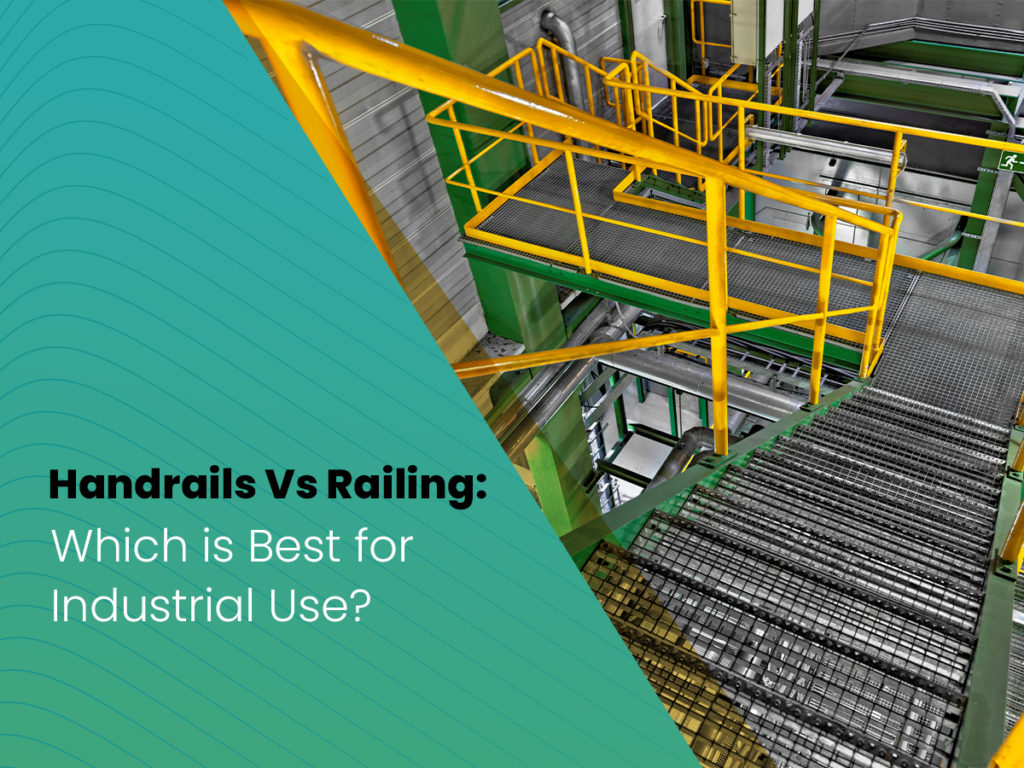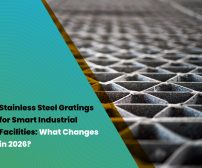
What is the Difference between Handrails & Railings?
Handrails Stairs and railings both ensure the safety of the people moving up and down the stairs. However, they are different from one another despite being used to fulfill the same objective.
Handrail:
People hold onto a handrail or banister for support when climbing up and down the stairs. It prevents accidents or injuries resulting from tripping over or slipping down the stairs.
Handrails have to be strong enough to provide support to the people moving up and down the stairs.
They may extend from the side of a railing, remain on vertical posts (balusters) or be attached to the wall.
Railings:
The railing provides support to the people climbing up and down the stairs alongside creating a barrier on one or both sides of the staircase to prevent accidents.
A railing has to be strong enough to prevent breakage if someone leans against it or to break the fall during accidents.
Types of Material Used to Build Handrails and Railings
Different types of materials (wood or metal) are used to manufacture the handrails and railings. The suitability of the materials depends upon a client’s preference or a building’s interior décor. The railings can be designed in different styles based upon the interior décor. The following materials are commonly used to manufacture the handrails or railings.
Steel:
Two types of steel are used to manufacture railings and handrails alongside being used to build stair stringers.
- Galvanized steel that is coated with zinc to prevent rusting.
- Stainless steel containing nickel/chromium/nitrogen/molybdenum to prevent corrosion.
The zinc coated galvanized steel is generally used for industrial stair applications. On the other hand, the handrails or railings made of stainless steel are ideal for both residential and commercial buildings featuring contemporary interior décor.
- Stainless steel handrails can be paired with stainless steel or glass railings.
- Stainless steel railings can be paired with handrails made of similar or different materials, such as wood or metal.
Aluminum:
The lightweight aluminum can be used to manufacture both handrails and railings. It is possible to fashion the aluminum railings in different designs. The density of aluminum is lower than other metals and the aluminum alloy is naturally resistant to corrosion or rusting.
Aluminum handrails and railings can be used for both indoor and outdoor applications. The aluminum railings or handrails can be installed anywhere, such as residential, commercial and industrial.
Wrought Iron:
This is an iron alloy with a low content of carbon. The handrails or railings made of wrought iron are ideal for both indoor and outdoor applications. This iron alloy can be used to manufacture strong and durable railings and handrails for both commercial and residential buildings.
The wrought iron can be used to manufacture decorative railings due to its malleability. These handrails or railings can be colored through powder coating and can be installed on both straight and curved stairs.
Wood:
The handrails and railings made of wood feature sophisticated look irrespective of the design. This material is being used to manufacture both simple and decorative handrails and railings for centuries. The wooden handrails and railings have to be sanded or treated with a waterproof coating in order to prevent damage resulting from humidity or pest infestation.
The wood from various plants, such as mahogany, red-oak, ash, cherry, cypress etc., are used to manufacture durable and classy railings and handrails. The wooden handrails are usually found in residential buildings, hotels and some office buildings. They can be installed on staircases as well as decks and can be paired with railings made of wood, metal, glass or other materials. The wooden railings are commonly installed on indoor staircases; however, they can be used outdoors after being treated with waterproof coating. These railings can be installed on staircases made of wood, glass or other materials.
Glass/Fiberglass:
The toughened glass is a special type of glass which is used during the construction of staircases and railings. This variant of glass is tougher (around 8 times) than the normal variant of glass. The glass railings and staircases complement the contemporary interior décor of residential and commercial buildings. This type of railing is installed on interior as well as exterior staircases.
The glass panels used as railings can be frameless or can be partially or fully framed using frames made of stainless-steel or aluminum. The light can penetrate through the glass. Therefore, glass railings can make a room look spacious alongside providing the users with a safety barrier. The glass railings may be made of transparent, frosted or tinted glass. The railings made of glass work as wind barrier when installed on exterior staircases.
Crucial Stairway Components in Industrial Application
Stairs Treads:
The treads are one of the fundamental parts of a staircase. They provide users with a solid foundation to step on alongside ensuring balance of the stairs. The treads may be made of wood (ironwood, knotty pine, walnut, hard-maple, white/red oak or distressed wood), toughened glass, stone (bluestone or limestone), tiles, composite material, steel or concrete.
Platform Stairs:
The floor or ground adjacent to the bottom or top step of a staircase is called landing. The platform stairs have intermediate landing areas where the stairs change direction. In industrial applications, the platform stairs provide the workers with sufficient space to land or stand when working on something. There are two types of intermediate landing in platform stairs.
- In half landing, the stairs change direction 180-degree angle.
- In quarter landing, the stairs change direction in 90-degree angle.
Platform Handrails:
The platform handrails border the intermediate landing areas of a staircase. The people climbing up and down the stairs or standing on the platform hold onto the handrail for support. They can be manufactured in various shapes, sizes and designs based upon clients’ requirements.
At Earth Tech Engineering, you will find a varied collection of stair-treads, handrails, railings etc. All products have been manufactured by experts using first-class materials to ensure durability and longevity. We are a leading supplier and exporter of handrails, stairs, railings and other components alongside being a reliable manufacturer. With a team of professionals and technologically advanced devices, we deliver premium quality products to our clients.






